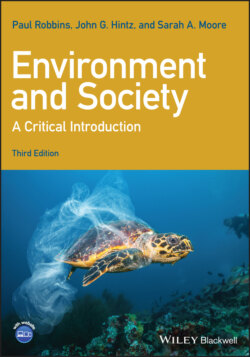Читать книгу Environment and Society - Paul Robbins - Страница 35
Thinking with Population
ОглавлениеIn this chapter we have learned that:
Human population growth holds serious implications for the sustainability of environmental systems, especially as growth tends historically to be “geometric” or exponential.
Environmental impacts of individual people and groups can vary enormously, owing to variations in technology and affluence.
Population growth has often led to increased carrying capacity, owing to induced intensification and innovation.
Carrying capacity and ecological footprint analysis can be used as indices to think about impacts of human individuals and populations.
Malthusian thinking has severe limits for predicting and understanding human– environment relations, since population is an effect of other processes, including development and the rights and education of women.
Even accepting important criticisms, of course, the question of population cannot be fully ignored. Given the lifestyle of the people in places like Phoenix, Arizona, where massive amounts of water are expended just maintaining peoples lawns, there may well be a limit to the number of people the world can maintain, and every person over that limit certainly taxes the landscapes, with implications for native biodiversity, for open space, and for clean air. Still, as such resources become scarce and more valued, an incentive to provide them may emerge. Environmental groups (like The Nature Conservancy) are increasingly buying lands throughout Arizona, for example, simply to protect them from development, leave them open and unspoiled, and allow them to provide habitat for the flora and fauna of the desert. Advocates of such an approach suggest that the very scarcity of these environmental “services” is the ticket to their conservation. It is to this argument – that markets can provision and produce scarce environmental goods – that we turn next.
